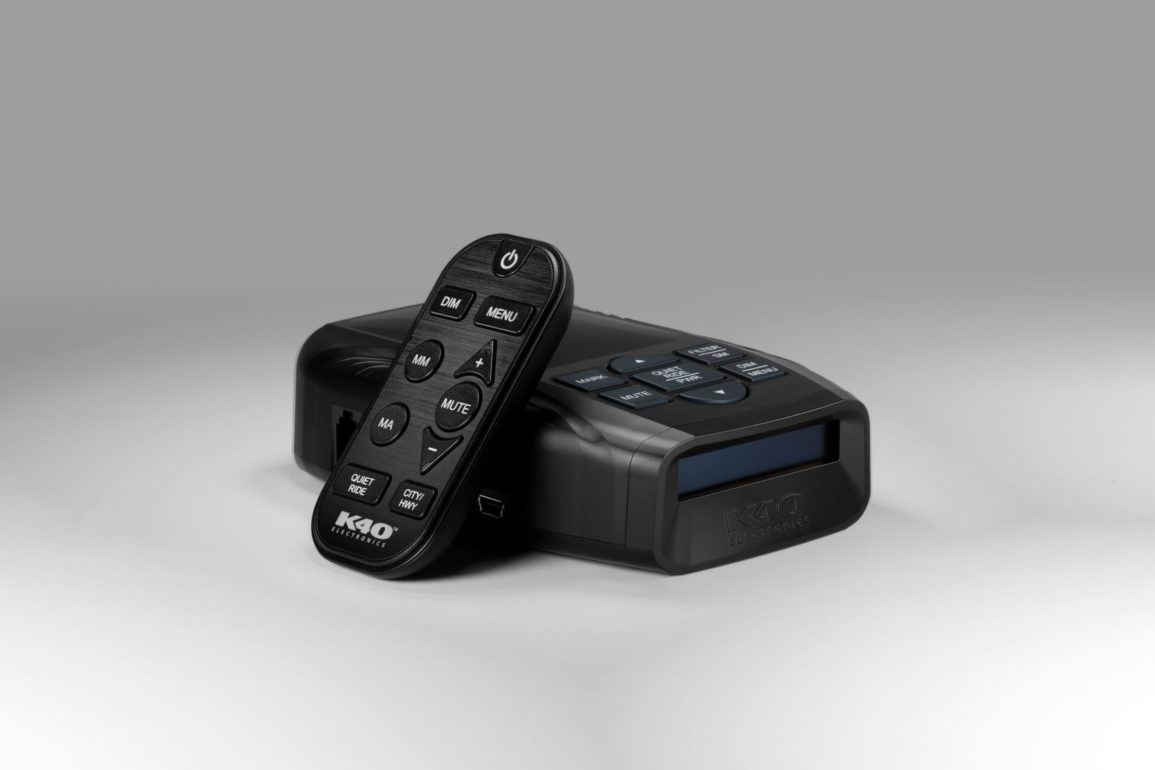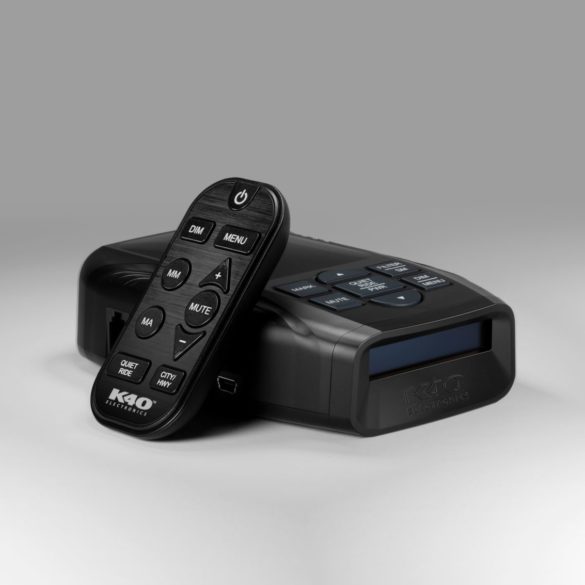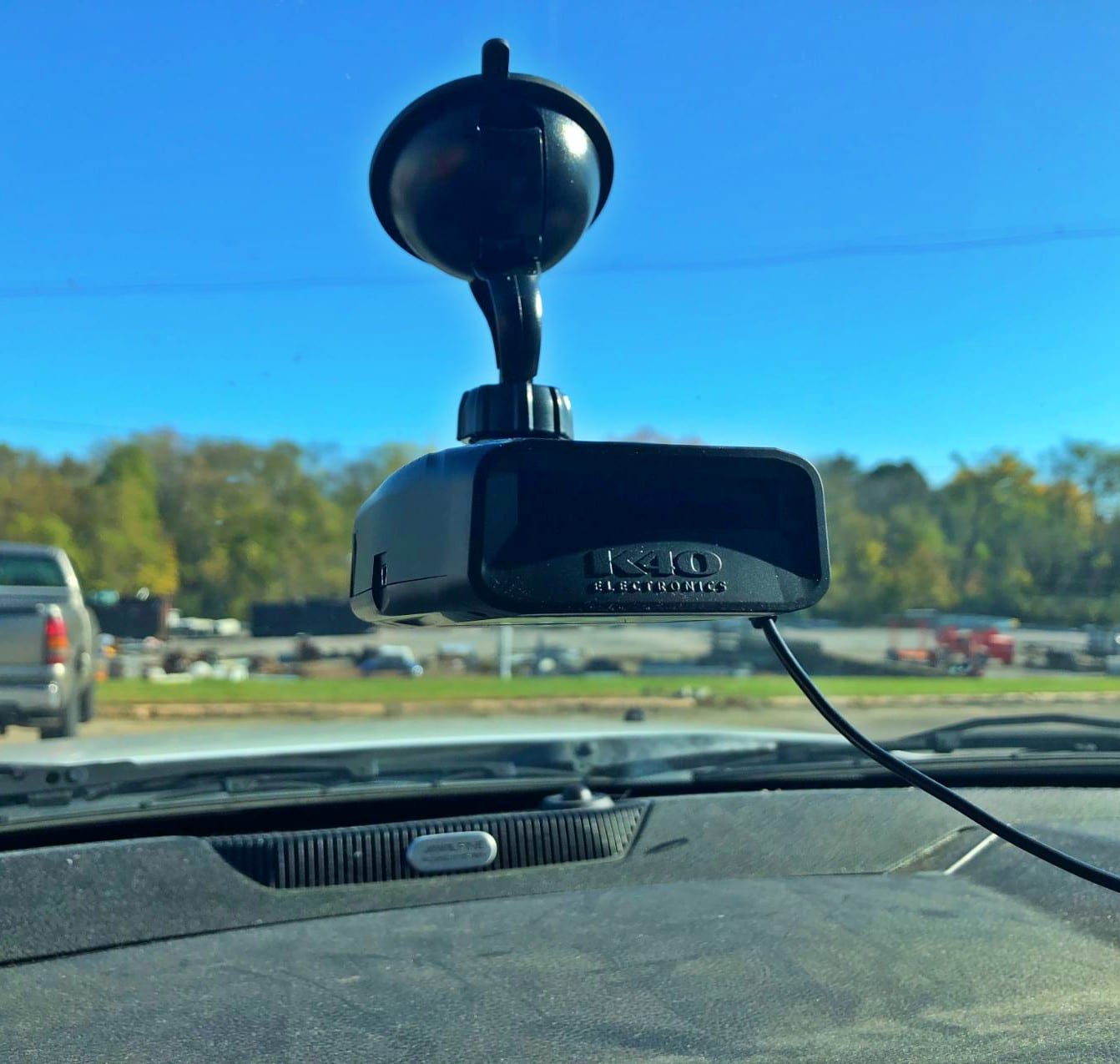Affiliate Disclosure: As an Amazon associate, Automoblog earns from qualifying purchases. The Platinum 100 in this review was supplied by K40 Electronics. The opinions below are my own based on my personal experience with the product.
In an ever-growing market of premium-grade radar detectors, the selection from K40 Electronics tops many best-of charts. One of the company’s latest offerings is the K40 Platinum100 with GPS. As the name suggests, this unit features a full range of GPS-enabled capabilities, advanced filtering technology, and radar band selectivity. Additionally, K40 designed the Platinum100 unit to eliminate false alerts.
Other extras include the company-backed Ticket-Free Guarantee. If you receive a ticket in the first year of owning (and using!) the unit, the company will pay it (of course, some conditions apply).
While a quick glance at the K40 Platinum100’s lengthy list of features is certainly enough to pique one’s interest, I felt it best to withhold my final judgment until I was able to actually put this unit to the test. The following is what I found upon placing the K40 Platinum100 in my truck.
What Comes With The K40 Platinum100?
The K40 Platinum100 I received included everything needed for quick, efficient, and trouble-free installation. The kit consists of the actual Platinum100 unit, its mount, two power cords, and a remote control (optional). This kit also includes a set of comprehensive instructions for installation and use.
K40 Platinum100 Features
The K40 Platinum100 radar detector with GPS includes a broad range of features that drivers should find helpful.
LNA Technology
The Platinum100 uses Low Noise Amplifier (LNA) technology to increase range and sensitivity. Similarly, every Platinum100 is standard with a more powerful CPU, allowing the unit to be more responsive and customizable.
GPS Controls
I like the extensive array of GPS-based features on the Platinum 100, which streamline operation. One of the first I tried was the manual Mark to Mute function. I just had to push the “MM” button to mark the source of non-police radar. That’s where the “distraction-free” benefit comes in. When you use the Mark to Mute feature, the system won’t alert you to every automatic gate or garage door that dot your travels.
The Mark to Alert function is the reverse. It allowed me to mark points of interest, including speed traps, school zones, and red-light cameras. I liked that once I marked those spots, the Platinum100 would not “alert” at those locations during subsequent travels. This button is labeled as “MA” on the Platinum100.
The detector’s built-in speed monitor tracks your speed and sounds an audible alarm if you exceed the preselected speed threshold. That helped me maintain appropriate speeds without glancing away from the road and down at my speedometer. Another helpful feature is the Quiet Ride function. As the name implies, it silences all alerts when you drive at a preselected speed. That allows you to listen to music, talk, or just enjoy a leisurely drive without interruption.
I especially enjoyed the Auto Filter feature that automatically adjusted detection strength based on the speed at which I drove. As K40 notes, it’s great for those of us who like a “set it and forget it” approach. At low speeds, sensitivity is reduced to minimize false alerts, while sensitivity is increased at high speeds to provide drivers with a lengthier response time.
Advanced Filtering Features
K40 equipped the Platinum100 with several filtering capabilities. They include:
K-band Filter: This filter automatically senses and rejects alerts from safety-based radar signals, such as those produced by Collision Avoidance and Lane Departure Warning systems of other vehicles.
Ka-Band Filter: I found this reduced the number of alerts I received from non-police radar sources, such as those triggered by other radar detectors and satellite broadcasts. You can customize the alerts you receive, too.
Traffic Sensor Filter: This minimizes false alerts from traffic monitoring devices, such as those that count the number of vehicles through particular intersections or on the freeway.
Radar Band Selection
I was able to customize the detection range through Manual Radar Band Selection. With this helpful feature, you can customize how you want the K40 Platinum100 to work based on the day, time, and area of your travels. This manual K-Band filter makes it possible to hone in on a specific frequency range associated with radar use in a particular area, thereby minimizing false alerts. They are as follows:
- K-Band Narrow/Wide/Extended: Customize the frequency range of K-Band radar signals.
- Ka-Band Narrow/Wide: Customize the frequency range of Ka-Band radar signals.
Optional Remote Control
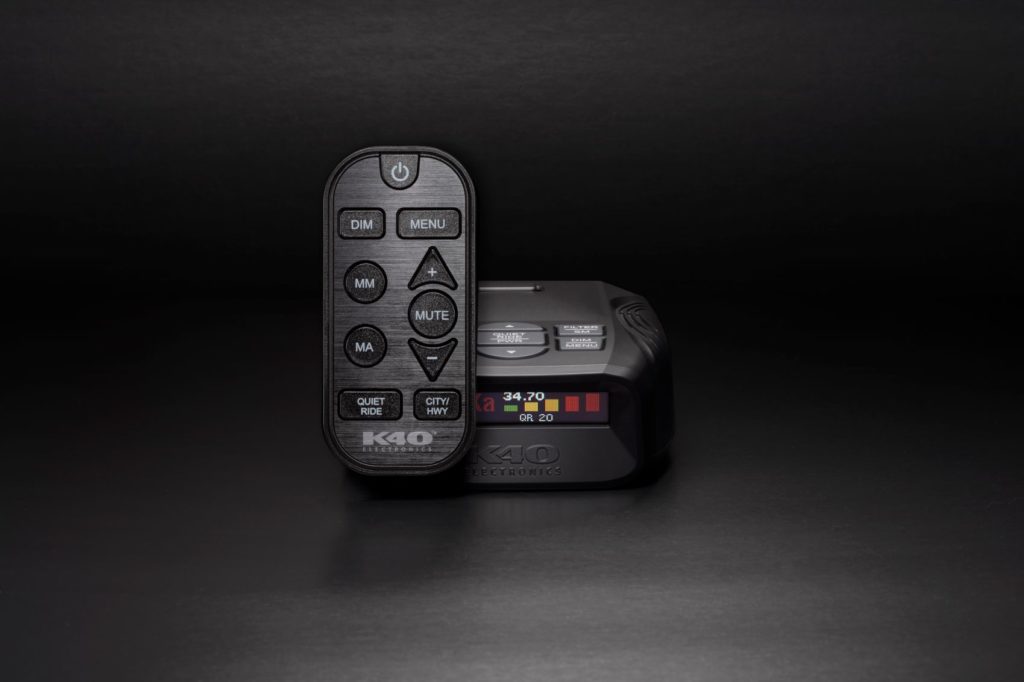
One unique feature of the K40 Platinum100 radar detector is its remote control. The Platinum100 can be ordered with or without a remote. Both hardwired and wireless controllers are available for purchase, allowing drivers to customize their interaction with the Platinum100 interface.
The remote control allows you to make on-the-fly adjustments without taking your eyes off the road. K40 specifies this as a safety-related function intended to minimize distracted driving. I did not care for the remote control, which I will elaborate on a little further down in this review.
Optional K40 Laser Protection
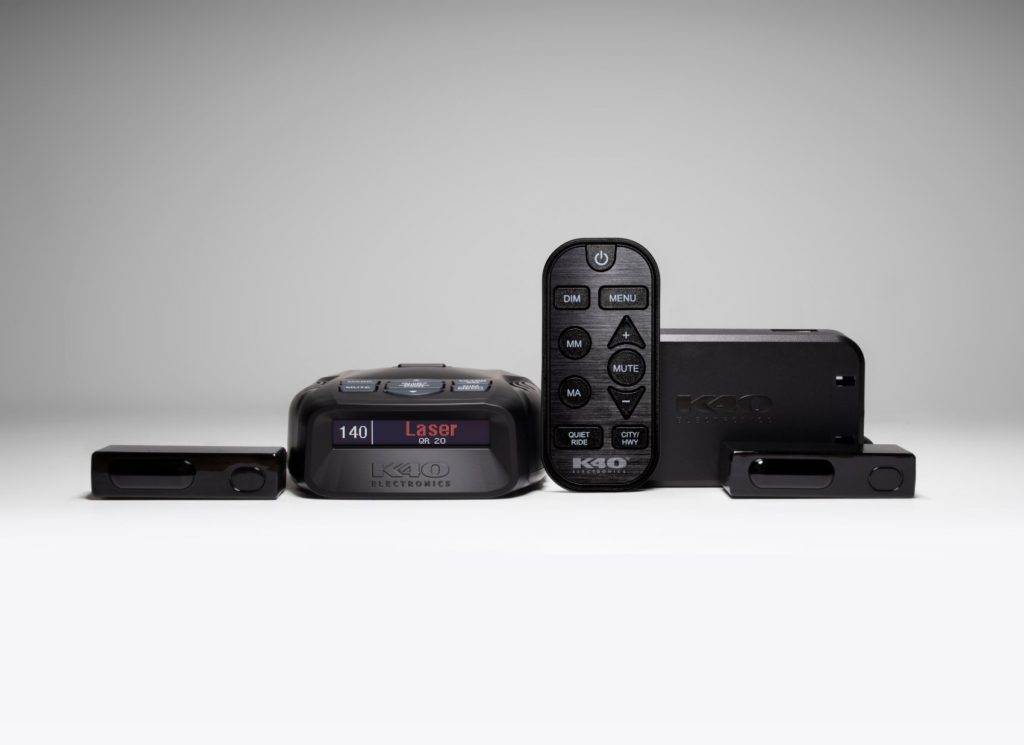
Like the optional remote control, the Platinum100 is compatible with the optionally-installed K40 Laser Defuser Optix. This system can be plugged into the Platinum100, which gives drivers protection against police lasers. According to K40, the interface can fire up to five laser diffuser transponders at once to jam police laser guns, including the latest VPR (Various Pulse Rate) LiDAR guns.
The test unit K40 supplied us with did not have this option, but it is available for drivers who want an extra layer of protection.
Using The K40 Platinum100 Radar Detector
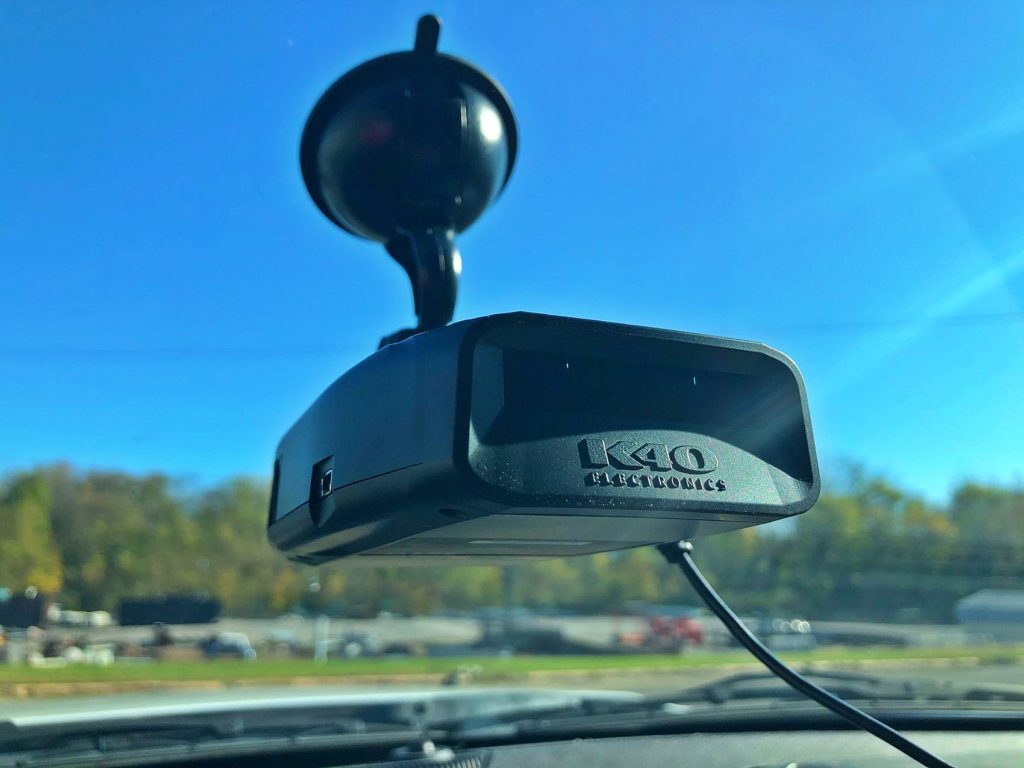
Installation
After taking delivery of the K40 Platinum100 radar detector, I quickly unboxed it, thumbed through the directions, and affixed the unit to its mount. Upon casual observation, the Platinum100 appeared to be solid in its design. I found it simple to snap in place. In less than five minutes, I headed for the driveway.
Installing the Platinum100 in my truck was about as simple as one could imagine. I quickly secured the unit’s mount to my windshield, plugged in the included power cable, and was ready to go. The entire installation process took no more than one minute. If you can plug in a lamp, you can install the Platinum100 in your vehicle. It is that simple.
The K40 Platinum100 also comes with two cords at no additional cost. Both the curly and the straight hardwired cord are included.
Settings
Toggling through the Platinum100’s various settings seemed relatively self-explanatory. Each function is not only denoted by an on-screen prompt but is also audibly voiced by the unit itself. I initially set the unit to its auto setting (i.e. Auto Filter) and hit the road.
How Accurate Are The Alerts?
After a short jaunt down a local county road near my home, I entered the city limits and merged onto the interstate. Approximately one mile into my interstate travels, the K40 Platinum100 started to alert, and I began searching for what might have triggered its response.
With no sign of law enforcement, I was perplexed, wondering why the K40 Platinum100 continued to alert. After cresting a rise, nearly ¼ mile later, I noticed a cruiser traveling northbound while I was in the southbound lane. Upon this observation, the K40 Platinum100 immediately gained my trust.
This was far from an isolated event, as time and time again, the Platinum100 alerted to radar activity long before I could visually confirm the source. This was quite impressive and left me with a positive impression of the unit’s capabilities.
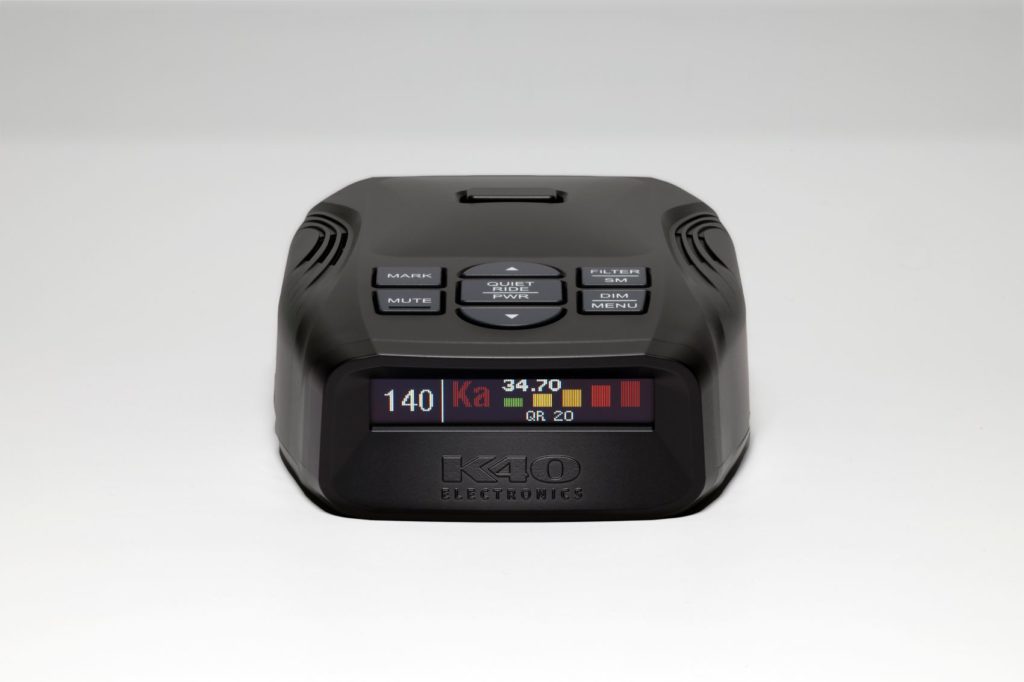
How The Different Settings Performed
Throughout my test, I alternated between the Platinum100’s settings, attempting to familiarize myself with the nuances of each. From my observation, the Auto setting proved to be most helpful. The unit’s other settings required me to accurately match each to its designated purpose to avoid multiple false alerts. I didn’t find this detracted from the Platinum100’s effectiveness. It worked as described.
The Auto setting was the most valuable in my particular circumstance. My daily commute to work fluctuates between rural driving, interstate travel, and navigating through heavily congested traffic, all in a span of 15 miles. You may find the K40 Platinum100’s additional settings work better for your specific needs, but for most drivers, Auto should work fine.
I had ample opportunity to test the Mark to Mute function. As luck would have it, the local police department positioned a mobile radar trailer along a roadway within my daily commute. I marked its location and waited to see what would happen.
After two successive weeks of going past this location twice daily, the mobile radar trailer is still in place. The Platinum100 has yet to flag its presence again. For me, this fully validates the Mark to Mute function’s effectiveness and proves the feature is as useful as it is practical.
Should I Get The Remote Control?
Throughout my review process, there was one function that I rarely had use for, and that was the remote. While I used the remote on occasion, I felt it easier to make any necessary adjustments via the Platinum100 unit itself.
From my standpoint, it seemed far more cumbersome to look downward at the buttons on the remote control than it was to reach forward while still maintaining my line of sight. However, this is purely a matter of opinion. Another driver may feel quite differently upon becoming familiar with the remote control, solely by touch.
What Does The K40 Platinum100 Cost?
The K40 Platinum100 with the optional remote control retails for $559.95 via the K40 Amazon Store (or $469.95 without the remote). While this might seem like a lot, this top-tier detector has an array of features and settings. I find those extras, combined with K40’s superior customer support, worth the price. However, there are a few advantages other brands have over K40.
Price
If you are shopping on a budget but still want a high-quality radar detector, the Escort MAX 3 is preferred over the K40 Platinum100 with remote control. The MAX 3 unit we recently reviewed retails for about $160 less than the Platinum100 featured here but still offers solid functionality.
However, the MAX 3 does not have the greatest magnetic windshield mount, which is problematic on a bumpy road. By contrast, the Platinum100 stayed on my windshield for the entirety of this review.
Dash Camera Option
Both Escort and Cobra have K40 beat in this regard as K40 does not offer a compatible dash camera for the Platinum100. If you are looking to pair your radar detector with a dash camera, we advise bundling them to save money.
Performance & Options
The K40 performed well, and many people will like the remote control option. But as an overall unit, we prefer the Uniden R7, which falls within the same price range.
Frequently Asked Questions
Where can I find K40 customer service?
Whether you are unsure of a particular setting’s intended usage or are experiencing operational issues with your unit, we recommend K40’s 24/7 Live Consult Support line. According to K40, their sales and customer service staff tenure averages 20 years. This should provide consumers with the peace of mind to know their questions and concerns will be answered and resolved.
What is the warning time for a K40 radar detector?
Many factors determine this, including the strength of the radar signal, direction, and location of the radar gun, and where the patrol officer is sitting. Thus, an exact measurement in terms of time is probably impossible, although we can confidently say the Platinum100 always alerted us in time while conducting this review.
My windows are tinted. Does that compromise the performance of my K40 radar detector?
While radar microwave signals are unaffected by fiberglass, plastic, and glass, they cannot penetrate metal. If your window tint contains metal, any radar detector’s effectiveness will be compromised, not just a K40 unit.
Will my K40 Platinum100 “jam” police radar?
No. Radar jammers have been banned by the Federal Communications Commission since 1997. The fines for each violation can reach up to $11,000.
What is “POP” Mode? Should I use it?
POP Mode detects a particular band of radar known as POP. This relatively short transmission signal allows a radar gun to capture a brief read of a vehicle’s speed before setting the gun to another band. POP radar does not transmit long enough to gather the necessary information needed to issue a ticket. In addition, POP Mode is more likely to trigger false alerts than real ones.
Is K40 the best radar detector?
If you wish to protect yourself from incurring costly speeding tickets, while also retaining a quiet, distraction-free driving experience, there are likely few better investments than that of the K40 Platinum100. While there are other top-performing radar detectors on the market, K40 is still one of the best.
Josh Boyd is an ASE Certified technician with over a decade of experience in automotive repair. When not under the hood, he can be found in the woods or on the water, pursuing his other passions of hunting and fishing.

